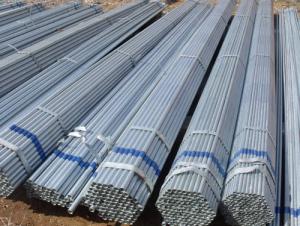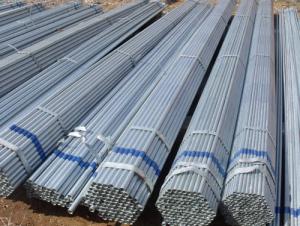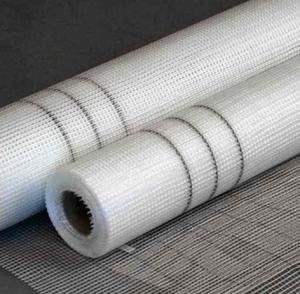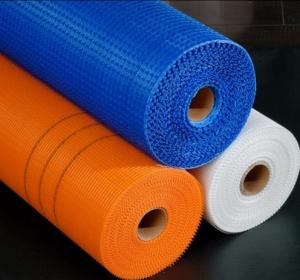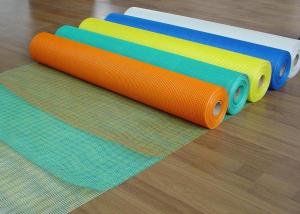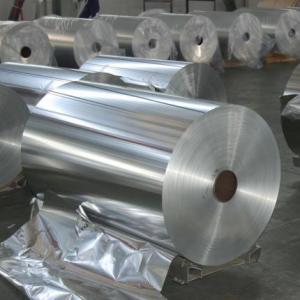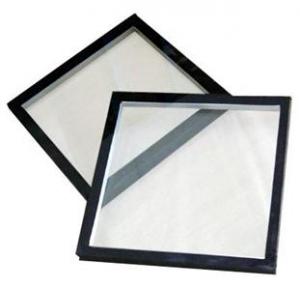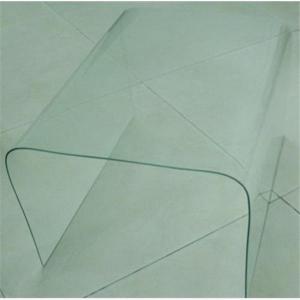Hot Dipped Galvanized Steel Pipe in Different Specifications
- Loading Port:
- China Main Port
- Payment Terms:
- TT or LC
- Min Order Qty:
- -
- Supply Capability:
- -
OKorder Service Pledge
OKorder Financial Service
You Might Also Like
1. Product Description:
Hot dip galvanized pipe is made of molten metal and iron substrate reaction to produce alloy layer, so that the substrate and the coating two. Hot dip galvanizing is first to pickling steel pipe, in order to remove iron oxide in the surface of steel, pickling, by ammonium chloride or zinc chloride aqueous solution or ammonium chloride and chloride zinc mixed aqueous solution groove cleaning is then fed into hot dip tank.
2. Product Characteristic:
Hot dip galvanized coating with uniform, strong adhesion, long service life, etc.. The complex physical and chemical reactions of the steel tube matrix and the molten bath have formed the structure of corrosion resistant. Alloy layer is integrated with the pure zinc layer and the steel tube. Therefore, its corrosion resistance.
3.Specification:
8 inch schedule 40 Hot dipped galvanized steel pipe
1.Thickness:1.3--17.5mm
2.Length: 6meter or as customer
O.D | O.D tolerance | W.T |
20-400mm | ± 0.03mm | 0.5-11.75mm |
International Standard | ISO9001:2008 | |
Standard | ASTM,GB1387-1985,GB/T3091-2001 | |
Material | Q195/Q215/Q235/Q345 | |
Product Category | Metallurgy, Minerial&Energy | |
Packing | 1.Big OD: | |
2.Small OD: | ||
3.woven cloth with 7 slats | ||
4.As per to clients | ||
4. Reference Picture:

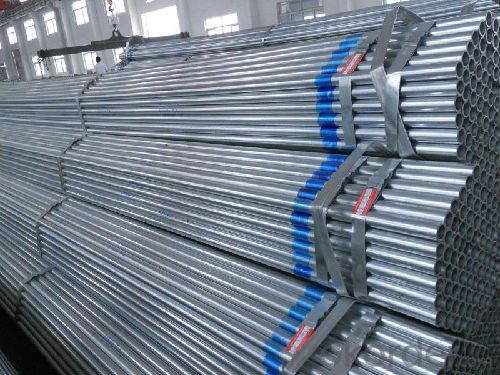

- Q:What are the common challenges faced in steel structure construction?
- Some common challenges faced in steel structure construction include: 1. Design complexity: Steel structures often require intricate designs to meet specific requirements, which can be challenging to create and implement effectively. 2. Material handling and transportation: Steel is heavy and requires specialized equipment for handling and transportation, which can be costly and time-consuming. 3. Safety concerns: Working with steel involves various safety risks, including falls, handling heavy materials, and working at heights. Ensuring proper safety measures and training is essential to mitigate these risks. 4. Precision and accuracy: Steel structures require precise measurements and accurate fabrication to ensure proper fit and alignment. Any errors can lead to costly rework and delays. 5. Welding and connections: Proper welding techniques and strong connections are crucial for the integrity and stability of steel structures. Ensuring proper welding procedures and inspections can be challenging. 6. Weather conditions: Construction projects are susceptible to weather conditions, and steel structures are no exception. Extreme temperatures, high winds, and heavy rainfall can impact the construction process and require additional precautions. 7. Cost and budget management: Steel structures can be expensive to construct, and managing costs and staying within budget can be a challenge. Monitoring material costs, labor expenses, and any unforeseen circumstances is crucial. 8. Project management and coordination: Coordinating various stakeholders, including architects, engineers, contractors, and suppliers, is essential for the successful completion of a steel structure project. Effective project management and communication are vital to overcome challenges and ensure smooth progress.
- Q:What is the purpose of steel trusses in structures?
- The purpose of steel trusses in structures is to provide structural support and stability, distributing the weight of the building evenly across the framework. By using steel trusses, architects and engineers can create large open spaces without the need for excessive interior columns, allowing for more flexibility in design and maximizing usable space. Steel trusses also offer durability, strength, and resistance to various environmental factors, making them ideal for constructing bridges, roofs, industrial buildings, and other large structures.
- Q:What are the advantages of tinned wire, copper wire and tin free copper wire?
- The copper wire is usually made of hot rolled copper without annealing (but smaller size wire may require intermediate annealing) drawn from the wire, can be used for weaving, cable, copper brush filter etc..
- Q:Can steel angles be used for stair stringers?
- Certainly, stair stringers can indeed utilize steel angles. Due to their robustness and resilience, steel angles are widely employed in the realm of construction. As stair stringers, steel angles provide the essential support and steadiness required for the stairs. They can be effortlessly trimmed and welded to the preferred shape and size, rendering them an adaptable choice for stair construction. Furthermore, steel angles possess resistance against decay, termites, and other types of harm, guaranteeing the durability of the stair structure. Nevertheless, it is imperative to seek guidance from a structural engineer or a professional contractor to ascertain that the steel angles conform to the specific criteria and weight-bearing capacity as per the intended stair design.
- Q:should i install wood protection on the sides of the wire that are facing the insulation? what about on the top of the wire - should I box the wire in? what kind of wood is best to use? or should i use another type of material such as plastic tubing (PVC)? is it best just to leave this wire exposed with no insulation at all (about a 12 inch space between each side of the wire? thanks.
- What you have is knob and tube wiring and it is the original wiring that was used when they started wiring homesThese wires are separated by them insulators you are talking about one is hot and one is neutralI would just keep some space form them for future use in case you do have problems with your wiring for any one who may have to dig in there and find a problemI have seen hundreds of older homes that have blown in insulation or fiberglass as well that has these wires covered up and the fact is this is not like romex and you cannot get a short unless these wires are actually touching one another and they do not the way they are wired until they come to a device that brings both wires togetherWhere ever you have two wires coming together at the lights or switches if they are less than 12 inches apart the leave the insulation away from themThe more you move and touch these old wires the better the chance you have of having troubleThe main thing you have to consider is to make sure you have the right size fuses or breakers on this NOTHING LARGER then a 15 amp fuse at allThe wires will be protected by a proper fuse and they will not over load or heat up more then they are supposed to if the right size over current protection is usedThey started using knob and tube wiring in the 1890s and did use that till the thirties and 40's in many areasIf you have the extra expense have an electrical contractor give you some estimates to replace this stuff and you will have no troublesIf it is not in your budget then leave space especially around where the wires come together and a little around the wires so that it can be repaired or replaced at a future time.
- Q:Can fiberglass mat tissue be used for composite pipe manufacturing?
- Fiberglass mat tissue is indeed applicable for the manufacturing of composite pipes. It is a reinforcement material commonly employed in the production of composite pipes. By providing strength and durability, it renders the pipes suitable for a wide range of applications. Typically, the fiberglass mat tissue is impregnated with a resin, such as polyester or epoxy, thereby facilitating the binding of the fibers to form a solid structure. This reinforcement material is renowned for its lightweight properties and exceptional resistance to corrosion, making it a highly desirable option for composite pipe manufacturing. Moreover, it can easily be molded into various shapes and sizes, allowing for the production of pipes with different diameters and lengths. As a whole, the utilization of fiberglass mat tissue in composite pipe manufacturing brings about numerous benefits, including increased strength, durability, and resistance to severe environmental conditions.
- Q:and I know the meaning of 125MN is 12500 tons. I want to know if 125MN is a English an abbreviation of the word, if it is, then what is he, if he is not that what is the meaning?
- MN is an international unit, said the bull"125MN's extruder is 12500T's extruderBloomberg metal Forum
- Q:How does glass fiber textile handle moisture?
- Glass fiber textiles are known for their excellent resistance to moisture. They are hydrophobic, meaning that they repel water and do not absorb it easily. This is due to the composition of glass fibers, which are made from inorganic materials that do not have any affinity for water. When exposed to moisture, glass fiber textiles do not get wet or become saturated like natural fibers such as cotton or wool. Instead, water droplets simply bead up on the surface of the fabric and roll off. This property makes glass fiber textiles highly suitable for outdoor applications such as awnings, umbrellas, and outdoor furniture covers, where they provide protection against rain and other forms of moisture. Moreover, glass fiber textiles do not support the growth of mold or mildew, as these organisms require moisture to thrive. The hydrophobic nature of glass fiber prevents the absorption of water, reducing the presence of moisture that would otherwise support mold growth. This makes glass fiber textiles ideal for applications in humid environments, such as bathrooms or swimming pool areas. In summary, glass fiber textiles handle moisture exceptionally well due to their hydrophobic nature. They repel water, preventing the fabric from becoming wet or saturated, and they do not support the growth of mold or mildew. These properties make glass fiber textiles a reliable choice for various applications where moisture resistance is required.
- Q:What is the role of steel rebars in industrial construction?
- Steel rebars play a crucial role in industrial construction as they provide reinforcement and strength to concrete structures. They are commonly used to reinforce beams, columns, and slabs, enhancing their load-bearing capacity and durability. By preventing cracks and ensuring structural stability, steel rebars help industrial buildings withstand heavy loads, seismic activity, and other external forces, making them a vital component in ensuring the safety and longevity of the construction project.
- Q:Are there any alternatives to steel rails?
- Indeed, steel rails are not the only option available. Concrete rails, constructed using reinforced concrete, serve as one alternative. Concrete rails possess various advantages, encompassing reduced maintenance costs, an extended lifespan, and decreased noise levels when contrasted with steel rails. Another possibility lies in composite rails, which utilize a blend of materials such as fiberglass, carbon fiber, and polymers. Composite rails offer numerous merits, including a high strength-to-weight ratio, resistance to corrosion, and reduced energy consumption during the manufacturing process. Moreover, some nations have conducted experiments with wooden rails, particularly on heritage or tourist railway lines. Wooden rails can present a visually pleasing alternative, though they may necessitate more frequent maintenance and have a shorter lifespan in comparison to steel or concrete rails.
1. Manufacturer Overview |
|
|---|---|
| Location | |
| Year Established | |
| Annual Output Value | |
| Main Markets | |
| Company Certifications | |
2. Manufacturer Certificates |
|
|---|---|
| a) Certification Name | |
| Range | |
| Reference | |
| Validity Period | |
3. Manufacturer Capability |
|
|---|---|
| a)Trade Capacity | |
| Nearest Port | |
| Export Percentage | |
| No.of Employees in Trade Department | |
| Language Spoken: | |
| b)Factory Information | |
| Factory Size: | |
| No. of Production Lines | |
| Contract Manufacturing | |
| Product Price Range | |
Send your message to us
Hot Dipped Galvanized Steel Pipe in Different Specifications
- Loading Port:
- China Main Port
- Payment Terms:
- TT or LC
- Min Order Qty:
- -
- Supply Capability:
- -
OKorder Service Pledge
OKorder Financial Service
Similar products
New products
Hot products
Hot Searches
Related keywords
